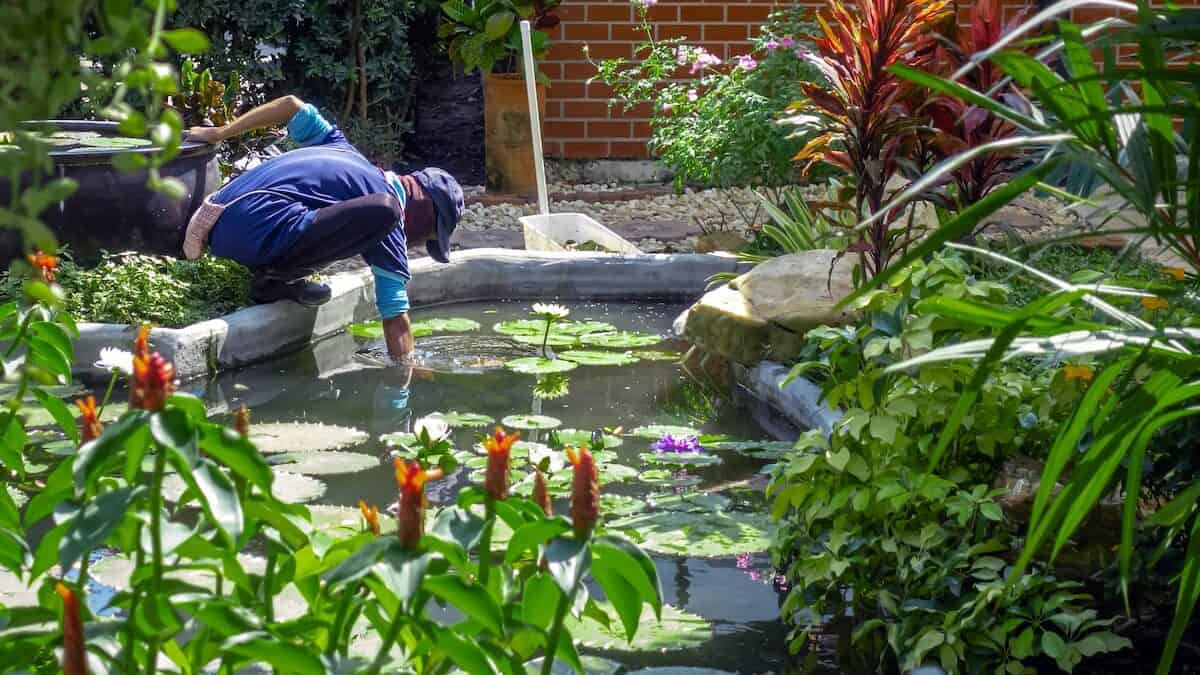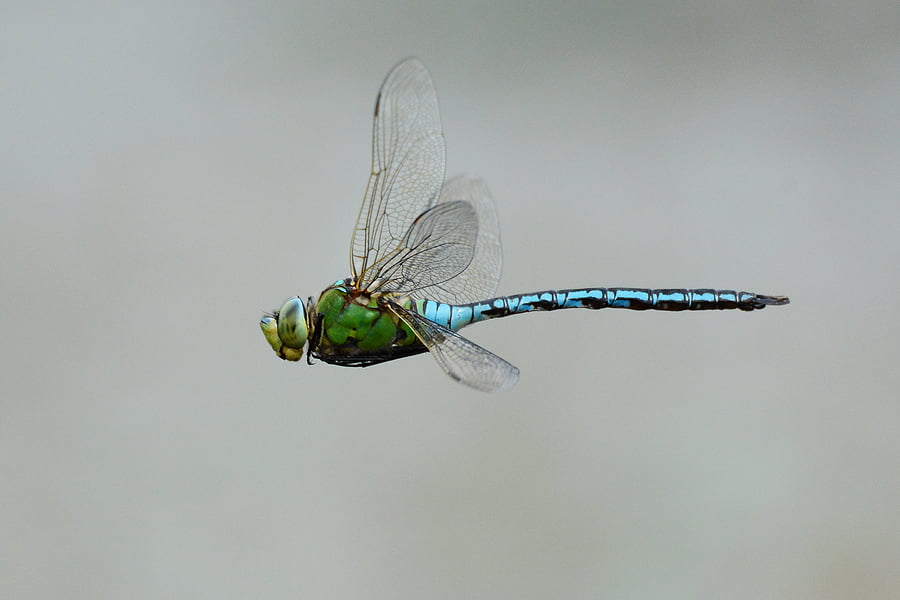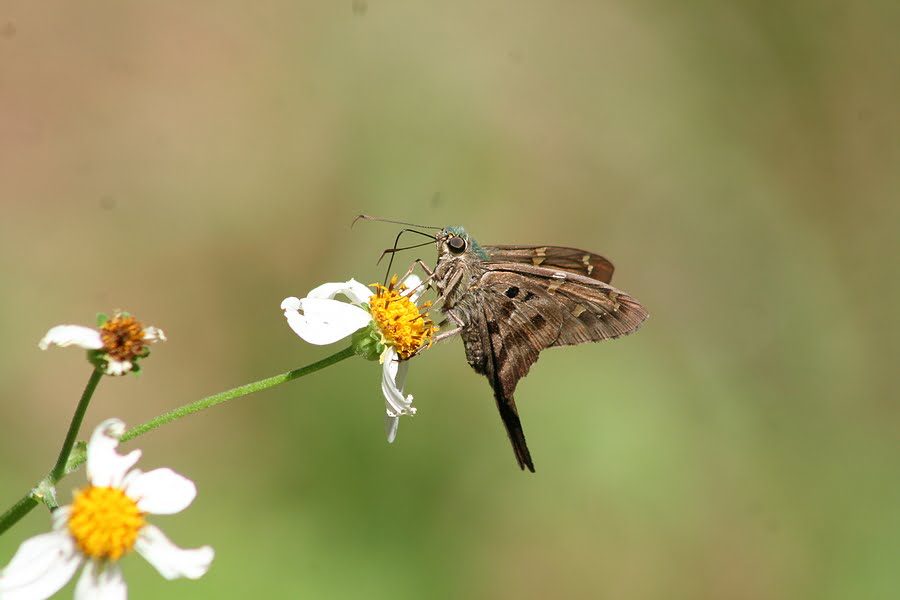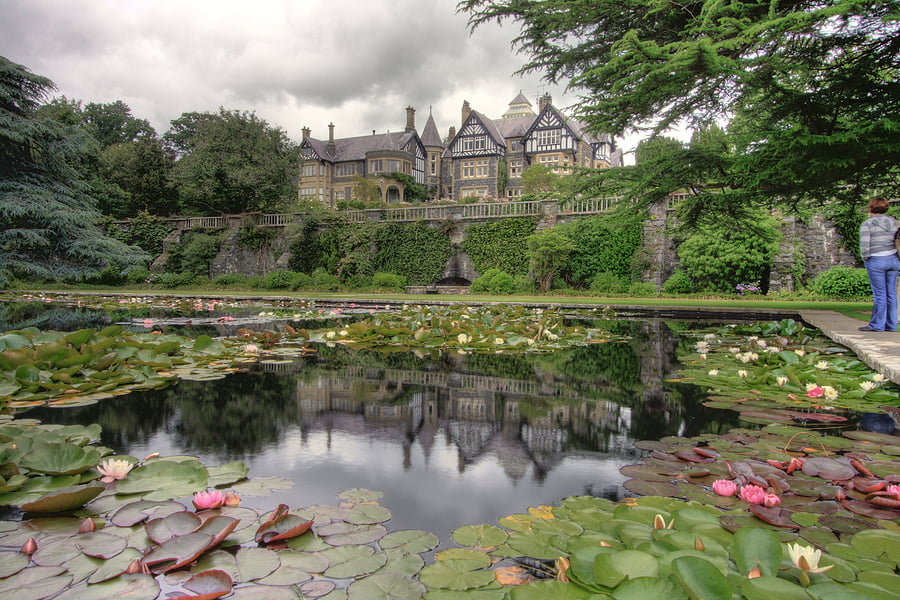
Which Are Some of The Best Native Pond Plants?
24th July 2022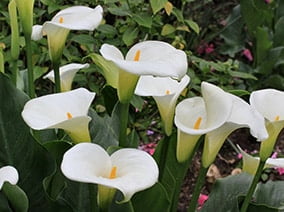
Best Pond Plants For A Shady Garden
18th August 2022Summer is a good time of year to carry out some routine maintenance on your pond. The tadpoles and other aquatic wildlife will have had time to develop and leave, so you won’t disturb them. The plants will be approaching the peak of their growth cycle, so it is a good time to carry out some checks and balances.
Remove excessive pond algae
One of the biggest problems with summer ponds is the growth of excessive algae. Some algae can be useful to provide food and shelter for pondlife, but if it is allowed to get out of hand, it can damage the ecosystem of the pond.
The most common type of algae found in garden ponds is blanket weed algae, which grows in feathery green strands. If left unchecked, it can form large mats which drift to the surface, choking out other plants and preventing oxygen from mixing in the water. This deprives other plants of the oxygen, sunlight, and nutrients that they need to grow.
Blanket weed algae can be hooked out of the pond with a bamboo cane, by twirling the cane to wrap the stands of algae around it. If the pond is small, you may find it quicker to remove the algae by hand. Alternatively skimming nets or even an old kitchen sieve can be very useful tools. Take out as much as you can, because it grows quickly, and it is difficult to eradicate it completely.
To help control the spread of algae in the future, make sure that any fertilisers you are putting on the garden are not able to run into the pond, as this will exacerbate growth. There are also many treatments available to deal with algae, from logs of barley straw to all manner of liquid ‘miracle’ cures, algaecides and dyes. We would definitely not recommend the latter two as they will be harmful to wildlife and upset the ecosystem of the pond. Any liquid treatments should be designated as harmless to wildlife, such as Ecopond Barley-bio. Be aware that none of these are a panacea and are more an aid to control rather than eradication.
Make sure you have a good balance of other submerged plants in the pond, as these will use up some of the excess nutrients in the water, and inhibit the growth of algae. Also, a good density of different marginal plants will also help to control algae by out-competing it for nutrients, and a wide variety will maximise this effect across the growing season.
Another good tip is to increase the volume of surface plants in the pond, such as water lilies, Mphibious bistort and Water hawthorn because these help to filter out some of the sunlight and keep the water cooler, which help control the rapid spread of algae. Aim to have at least 50% coverage of the surface when in leaf during the growing season to maximise this effect.
Clear out other decaying plant life
Decaying vegetation can increase the nitrate levels in a pond, meaning that the water appears cloudy and murky. Eventually, dead plant matter can build up on the bottom of the pond, making it shallower and more prone to evaporation. The water is also more likely to become smelly and stagnant.
Pick out the largest dead leaves and flowers on a regular basis, but leave them at the side of the pond for a few hours to allow any insects or other wildlife time to crawl back into the pond. Also check them over for any obvious signs of eggs, and return them to the water if need be. Trim back and remove any dying foliage before it has a chance to rot down into the pond, especially water lily leaves which die back continually during the summer months.
Top up the water
As we are experiencing a warm dry summer, it is likely that the water level in the pond has reduced. Because ponds tend to have sides which taper inwards, a lower water level reduces the overall surface area, meaning that there’s less oxygen available for aquatic creatures. It also detracts from the appearance of the pond.
It is much better to use rainwater collected in a butt to top up a pond if possible, to avoid introducing any harmful chemicals and nutrients to the pond. If you have to resort to tap water, leave it to stand for 24 hours before adding it, to help some of the chlorine and other additives evaporate, but do be aware of restrictions on use in times of drought.
If you have fish in the pond, make sure that the fresh water is of a similar temperature to the pond water, to avoid thermally shocking them.
Topping up the water can also help to re-oxygenate it, mixing it up and dissipating any dead low-oxygen layers deeper in the pond which can create anaerobic conditions that create foul smelling sludge at the bottom of the pond.
Thin out submerged plants
Submerged plants are essential to maintain a healthy balanced pond. They are known as oxygenators, and they help pondlife to breathe. They also soak up excess nitrates and nutrients, which curbs algae growth. Common types of oxygenating plants include Hhornwort, Willow moss and Water crowfoot.
However, they can grow prolifically in the summer months, and they shouldn’t fill more than one third of the pond, otherwise they may start to choke off other aquatic lifeforms.
Weed out unwanted marginals
Marginal plants grow in containers around the ledges of the pond. At this time of year, seedlings may start to grow in unwanted places, which will lead to a crowded and untidy-looking pond. Weed out any unwanted growth.
If any of the marginal plants are outgrowing their containers, replant them in a bigger container, or divide them and replant in two smaller ones.
Clean out the filters
A pond with a good balance of plants should not need filters to keep the water in a healthy and balanced condition. However, if you do have filters, remove them and clean off any debris.


